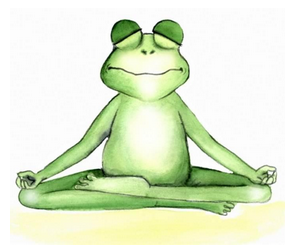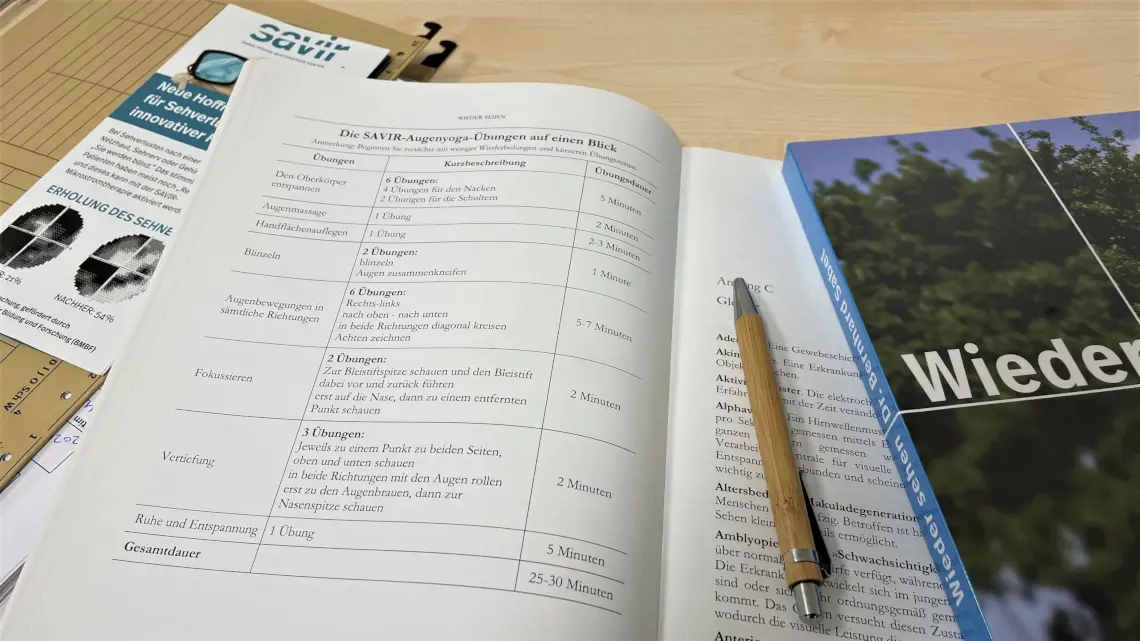Eye training: simple exercise that can improve your vision

Like our arms and legs, our eyes are moved by contracting muscles. Attached to the back of the eyeball are several tiny muscles that can pull the eye in all directions. Keeping the eye muscles in shape with eye training is therefore essential for good vision.
This article is also available as a video on our Youtube channel: Savir Lectures 6: Vision Loss and Eye-movement
Eye movements are important for sharp vision
You may not have realized until now how important eye movements are to normal vision. ou are probably aware of the normal eye movements you use to move your eye right and left or up and down. But even when you look into someone’s eyes, you miss the tiny microsaccades. These are imperceptibly small, jittery eye movements that are extremely important for high-resolution vision.
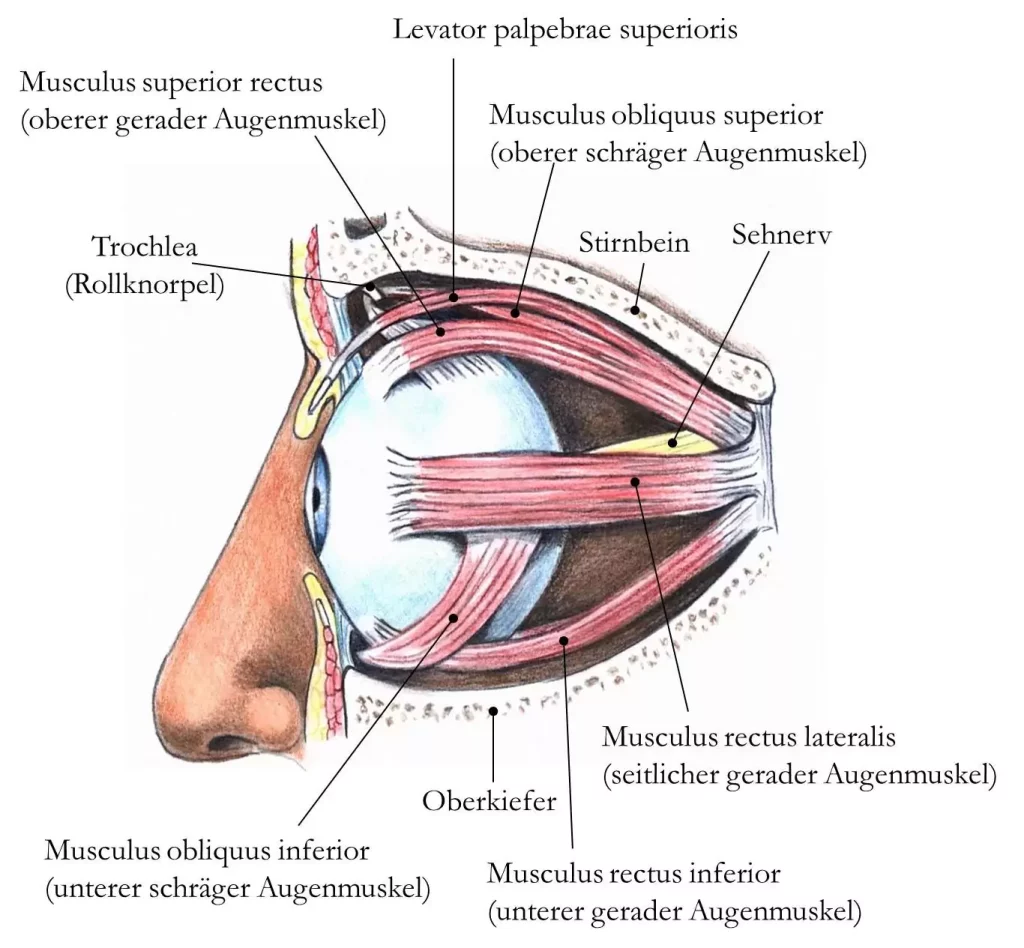
In a healthy person, the eye muscles function effortlessly and move both eyes in perfect synchronization in the same direction without us having to think about it. The two eyes resemble a dancing couple moving together to the rhythm of music The perfect synchronization allows the brain to match the two images and create one from them. Even with small discrepancies between the two images, the brain is still able to somehow merge (fuse) the two. Perfect vision is thus the result of both parallel eye movements and the fusion of the two images in the brain.
Eye movement disorders and double vision
This fine coordination of eye position and movement is adjusted during early infancy as the infant looks around. However, if eye coordination fails so that the different eye muscles do not move together, the brain sees two incomplete images that do not overlap correctly, which is called double vision or diplopia. This occurs either in early childhood or as a result of an injury to the optic nerve or brain.
The brain does not like confusion and wants a clear image, so in this situation it increasingly ignores one eye to avoid becoming confused. As a result, one eye is weakened in favor of the other. Even if both eyes have perfectly normal vision, only one is then used by the brain in everyday life. If this starts in early childhood, the other eye becomes weaker and weaker, which can lead to amblyopia, a disease in which the person becomes weak-sighted in one eye.
In childhood, this can be remedied by covering the normal eye for a few hours each day and reversing the process in this way. However, if this misalignment of the eyes occurs in adulthood, when the brain is no longer as flexible, for example after an injury to the optic nerve or brain, the double vision can persist for years if not adequately treated, an uncomfortable condition that is extremely annoying for patients.
To find out what double vision feels like, you can perform the following harmless test: Look straight ahead with both eyes wide open while fixating on a small object. Then press lightly against the lower eyelid of one eye to shift the eyeball a tiny bit. You will now see two different images. If you want to strengthen the double image, press against the other eyeball as well, but in the other direction. Be careful not to press too hard, and do not extend the experiment for more than a few seconds.
Double vision can be treated with prism glasses or eye training. In severe cases, eye muscle surgery may be necessary, but this should only be considered if all other methods fail.
Improve vision with eye training: Eye Yoga
Eye movement training can help you better identify objects in the blind area of your visual field, making you less likely to collide with someone, safer crossing the street, and also better at turning corners. By consciously scanning at these critical moments, you will be more likely to see objects – something you should definitely learn to do! Even if you are walking toward a door or looking for something that is on a table or shelf, this skill can be helpful. If you have a loss of vision in the lower part of your visual field, consciously scanning the floor can save you from tripping or a potentially momentous misjudgment of stairs.
Eye movement training (movement of the eyes in all directions).
If you wear glasses or contact lenses, you should take them off or remove them during the eye training sessions described below. Whenever you can do something without glasses, take them off and give your eyes a chance to see without help, even if you can’t see clearly at first.
Sit comfortably on a chair or on the floor. Take your time for the exercise and stay relaxed.
- Stretch your arms out to the sides, thumbs pointing up. Keep your head still, face turned forward. Look alternately back and forth between the thumbs, moving only the eyes – not the head – toward them. Repeat the movement about ten times. Gradually, you will be able to move your eyes farther and farther to the side without straining, thus widening your angle of vision. Therefore, stretch your arms sideways as far as possible so that only your thumbs are visible to you at the edge of your field of vision. Then close your eyes and sit still for about a minute.
- Look straight ahead and then upward as far as you can. Look forward again. Look down as far as you can. Look forward again. Keep your head still throughout the exercise and move only your eyes. Repeat the exercise ten times. Then close your eyes and relax.
- Imagine a square. Look to the upper right corner of the imaginary square. Then look to the lower left corner. Look forward again. Repeat the exercise ten times. Close your eyes and rest.
- Now look to the upper left corner and then to the lower right corner. Then look forward again. Repeat the exercise ten times. Close your eyes and rest.
- Extend your left arm straight out in front of you with your thumb pointing up. Look at your thumb and slowly move it in a large circle along the edge of the visual field. While doing this, keep your head as motionless as a statue; make sure that your head does not follow the movement of your eyes. To do this, it helps if you rest your chin on your hand. First let the thumb circle five times in one direction along the edge of the visual field, then five times in the other direction, following it with the eyes. Then repeat the exercise with the right thumb.
- With your arm extended, write the number eight in the air as large as you can, following the movement with your eyes, both vertically and horizontally. Keep your head still so that only your eyes follow the movement of the thumbs. Draw squares in the air with their corners at the edges of your visual field. Your arm remains extended the entire time.
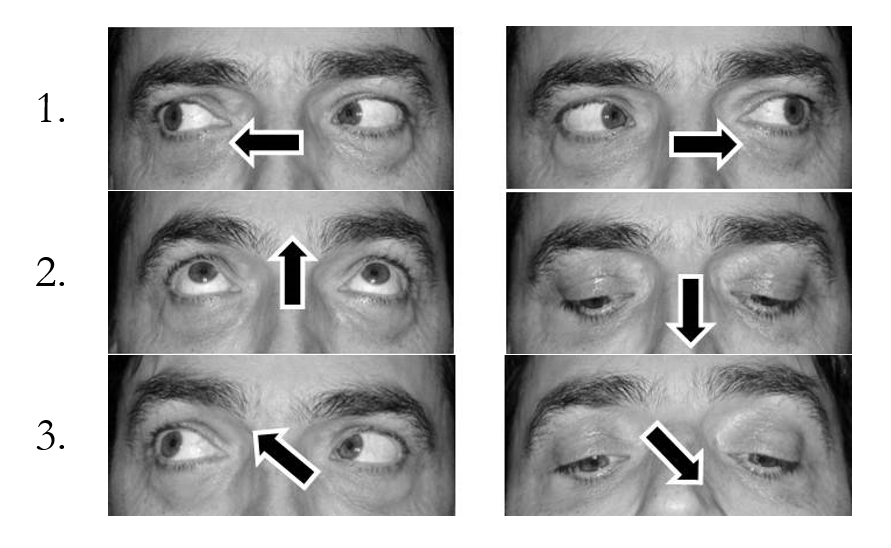
Focus
This famous “pencil push-up” exercise strengthens your eyes’ ability to converge on one point, like crossed eyes.
- Keep one arm straight out in front of you with a pencil in it or use your thumb pointing upward. Look at your thumb or at the top of the pencil while you move it in toward you to the point between your eyebrows and back again. Move your thumb/pencil back and forth ten times at a slow and steady speed. Each time when moving it toward the nose, stop at the position where you start seeing double images and move it slightly back again so you only see one pencil tip or thumb. If you are nearsighted or farsighted, you may not be able to see it clearly all the way, but do the whole movement anyway, straightening your arm fully and bringing your thumb/pencil right back toward the point between your eyebrows.
- Look at the tip of your nose and then on a point further away. Focus as clearly as possible on each of these points ten times. Now rest the eyes again doing the palming exercise.
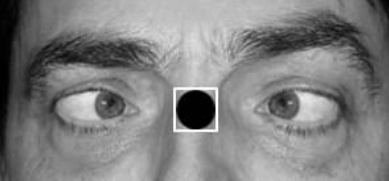
Copyright: by Bernhard Sabel.
Reach deeper
- When you hold a muscle stretched for a while in a calm manner, the tension in the muscle will be reduced and the energy previously bound there will be released. This happens in the yoga poses, and it happens when – without turning your head – you let your eyes look at a point for some time at the edge of your field of vision. Do this by looking at a point to the side, up, and down (hold for four to five seconds each).
- Roll your eyes ten times, first one way and then the other. Don’t think about how to move your eyes, instead look around along the edge of your field of vision in a continuous movement, without stopping anywhere (Figure 3 Eye roling) his exercise is important in advanced yoga, as it releases fundamental tensions and thus strengthens the total state of your energy. Do it in a calm manner and only after you have warmed up with the exercises in part 3 above, “Training eye movements (move your eyes in all directions).”
- Squint and look at your eyebrow center, hold your gaze there for a moment, then squint and look at the tip of your nose for a moment. Move back and forth several times between the two points. Move back and forth several times between the two points. This exercise removes deeper seated tensions, not only in the eyes, but in the whole body. Don’t overdo this, do it only after the previous exercises. With a bit of practice you should be able to hold your gaze fixed longer at the two points.
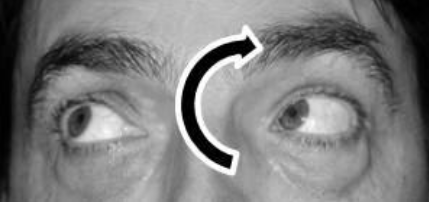
Copyright: Bernhard Sabel.
Rest and relax
Now rest for about five minutes with the exercise described above called palming. Rub your hands from time to time.
Even though you may see better right after the relaxation, you may lose some of that sight again when you are subjected to daily stress. Therefore, it pays to repeat the yoga eye exercises regularly – and your sight will gradually improve.
When you look at something, you don’t need to try hard to see it. Do not look with your eyes, look through your eyes. They are your windows to the world.
Palming
This supremely important exercise creates the relaxation that amplifies the effects of all the other exercises.
It will:
- Rest the optic nerve
- Relax your nervous system
- Bring more blood circulation to your eyes
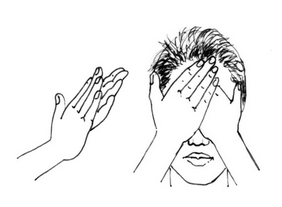
Remove glasses, watches and jewelry from your hands and wrists. Darken the room and sit at a table. Rub your palms with small quick movements against each other until they become quite warm. Then place your warm palms across the cavities of your eyes with the fingers of one hand placed on top of the fingers of the other on your forehead.
Make sure that you can open and close your eyes under your palms without any problems and with no light coming through. Then close your eyes for two to three minutes and feel the heat flow from your hands into your eyes while you rest them. Imagine that your eyes are soft and receptive.
Now start to imagine an ever-deepening blackness. You will be able to visualize blackness only if your optic nerve is relaxed. As you progress with palming, you will get closer to this goal. Intend to see blackness and fully accept whatever you get.
Please do not try too hard. It is counterproductive to put strain and effort into palming. You are not in a competition.
So eye training is a really useful tool in your bag of tricks. However, you should not expect it to improve your vision as much as vision restoration methods. Furthermore, you should be aware that frequent, one-sided eye movements can result in other limitations.
